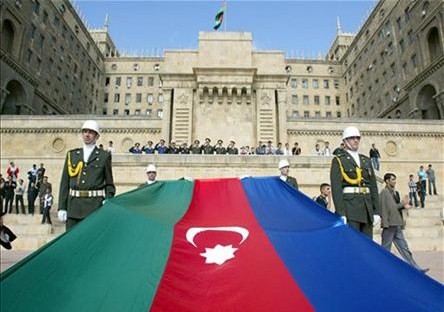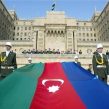
Turkey, Azerbaijan Re-Synchronize Conflict Resolution and Border Opening
Publication: Eurasia Daily Monitor Volume: 6 Issue: 228
By:

Under the protocols signed in Zurich, Switzerland on October 10, Turkey should establish full diplomatic relations with Armenia and re-open the land border between them. The United States, main driver of this initiative, insists that the protocols should be ratified and implemented “without preconditions and within a reasonable time-frame.” President Barack Obama reaffirmed this position most recently in the run-up to Turkish Prime Minister Recep Tayyip Erdogan’s December 7-8 Washington visit. Such reminders are being addressed equally to Ankara, Yerevan, and Armenian advocacy groups in the United States (Anatolia news agency, PanArmenian.Net, December 7, 8).
“Without preconditions” is widely understood to mean that Yerevan would not campaign for US recognition of an Armenian genocide by Ottoman Turks; and that Ankara would re-open the border without a synchronized withdrawal of Armenian troops from certain Azerbaijani districts (five districts beyond Karabakh are usually mentioned at this stage of the Karabakh conflict-resolution process).
“Within a reasonable time-frame” is widely interpreted to mean Turkish parliamentary ratification of the border-opening move by or before April 2010. This would avert the adoption of an Armenian genocide resolution in the US Congress, and deflect advocacy groups’ pressures on the Administration to recognize such a genocide in the president’s annual April 24 statement on this issue.
Turkey recognized Armenia following the Soviet Union’s collapse, but closed the land border in 1993 when Armenian forces began seizing districts beyond Karabakh in Azerbaijan, resulting in mass-scale ethnic cleansing. For 16 years, Turkey has taken the position that the re-opening of the land border depends on Armenian troops’ withdrawal from those districts.
US administrations of both parties have all along encouraged Turkey to reopen that border, so as to relieve Armenia’s economic semi-isolation in the region. This position stems partly from US domestic political calculations and partly from a nineteenth century Manchesterian belief (still informing US policies on selected issues) about trade as a basis for peace among nations. Until the current year, however, Washington did not strongly press this issue with Turkey.
From Azerbaijan’s standpoint, the principle of conditionality –border opening in return for troop withdrawal–forms the basis of its strategy for peaceful, stage-by-stage resolution of the conflict with Armenia. That conditionality was and remains Azerbaijan’s main diplomatic leverage for regaining those districts peacefully and returning the displaced population to its homes, pending an ultimate determination of Upper Karabakh’s status. By the same token, the conditional re-opening of the border holds out a major incentive for impoverished Armenia to withdraw the troops from those occupied districts. Azerbaijan had built its political and diplomatic strategy on that basis over the years and it counted on Turkey all along to adhere to that conditionality.
President Obama’s initiative, announced during his April 2009 visit to Turkey, struck a powerful blow at those assumptions. Turkey was being asked to lift that conditionality, and Ankara showed willingness to do so. European Union authorities in Brussels encouraged Turkey along that path. Washington and Brussels both claimed that Yerevan would become more tractable on withdrawing troops from Azerbaijani territories, once a process of Turkish-Armenian normalization moves forward, detached from that conditionality. In Brussels especially, this post-modern argument found a resonance out of tune with the real-world South Caucasus.
Candidate Obama had pledged during the election campaign to recognize an “Armenian genocide,” but President Obama could not do so without irreparable damage to US-Turkish relations. With pressures mounting from the president’s own party for congressional and presidential recognition of genocide, the administration decided to press for Turkish-Armenian normalization and offered the re-opening of the border –with its economic benefits to Armenia–in lieu of genocide recognition.
Obama’s initiative could have generated positive dynamics throughout the region, with strategic gains for the United States, had it pursued the Turkish-Armenian normalization track in synchronization with the Armenia-Azerbaijan conflict-resolution track. By separating the two tracks, and privileging the first, the policy proved ineffective. The US and EU pressed for fast progress on Turkey-Armenia normalization, but failed to press for Armenia-Azerbaijan conflict-resolution in the “Minsk Group” or the bilateral format. In this situation, Turkey started backtracking soon after having signed the October 10 protocols. Some U.S. administration officials with experience in the region did caution that progress was achievable if the two tracks were synchronized, rather than separated.
For its part, Baku reached out to Turkey’s government, political parties, civil-sector groups, and public opinion at large, with appeals to take Azerbaijan’s interests into account. This outreach effort was a first for Azerbaijan and it proved effective. It generated a strong current of opinion in the Turkish public and parliament, which would now make it difficult for the Turkish government to sacrifice or discount Azerbaijan’s interests, even if it decided to do so.
The Turkish government, however, has adjusted its course, as Erdogan’s Washington visit indicated. It remains for Baku to diversify its outreach to Turkey beyond Kemalist, nationalist, and moderate conservative groups, so as to encompass also the increasingly influential liberal opinion-making circles (ADA Bi-weekly, December 1, 2009).




